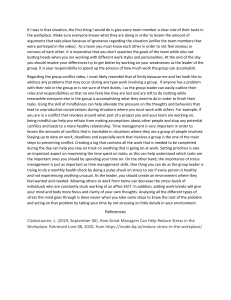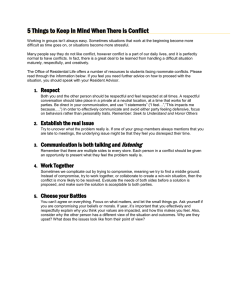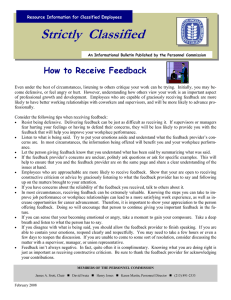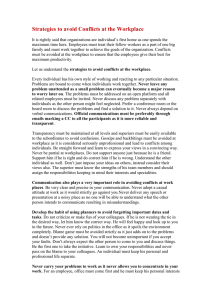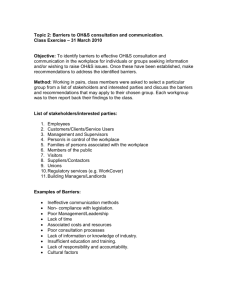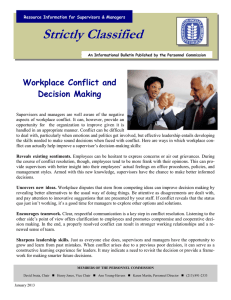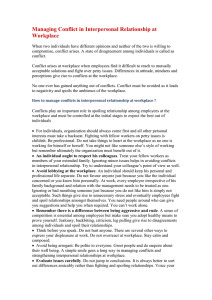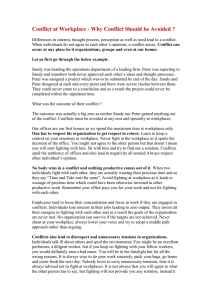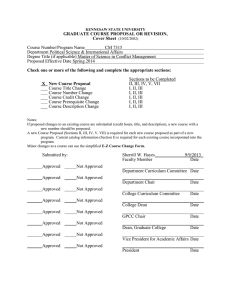Strictly Classified Resolving Conflict in the Workplace
advertisement
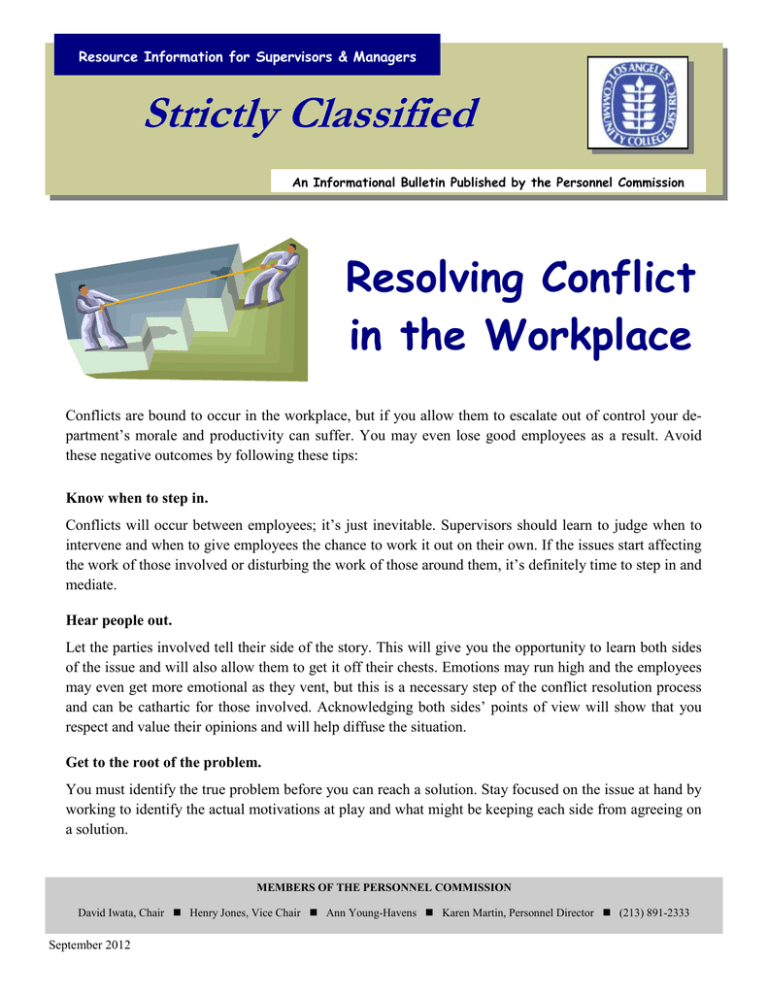
Resource Information for Supervisors & Managers Strictly Classified An Informational Bulletin Published by the Personnel Commission Resolving Conflict in the Workplace Conflicts are bound to occur in the workplace, but if you allow them to escalate out of control your department’s morale and productivity can suffer. You may even lose good employees as a result. Avoid these negative outcomes by following these tips: Know when to step in. Conflicts will occur between employees; it’s just inevitable. Supervisors should learn to judge when to intervene and when to give employees the chance to work it out on their own. If the issues start affecting the work of those involved or disturbing the work of those around them, it’s definitely time to step in and mediate. Hear people out. Let the parties involved tell their side of the story. This will give you the opportunity to learn both sides of the issue and will also allow them to get it off their chests. Emotions may run high and the employees may even get more emotional as they vent, but this is a necessary step of the conflict resolution process and can be cathartic for those involved. Acknowledging both sides’ points of view will show that you respect and value their opinions and will help diffuse the situation. Get to the root of the problem. You must identify the true problem before you can reach a solution. Stay focused on the issue at hand by working to identify the actual motivations at play and what might be keeping each side from agreeing on a solution. MEMBERS OF THE PERSONNEL COMMISSION David Iwata, Chair Henry Jones, Vice Chair Ann Young-Havens Karen Martin, Personnel Director (213) 891-2333 September 2012 Don’t get sidetracked. Respectfully redirect employees toward the actual issue if they start to get sidetracked. People often get wrapped up in minor details that prevent them from addressing the big picture. Try to keep everyone’s focus on the true problem without invalidating their feelings. Concentrate on a finding a solution instead of dealing with personal issues or office politics. Remain objective and in control. It’s important during mediation that you appear objective and in control of the situation. It can be helpful to ask both parties what their ideal resolution would be; however, you must be prepared to say no if necessary. Don’t let either side hijack the meeting and dictate what should happen. Set clear boundaries that clarify each person’s role as a team member and as part of the solution. Remember that it’s your right and responsibility to respectfully say no if someone’s ideas just won’t work within the framework of your department. Document everything. Keep a record of the entire process. This is crucial if problems arise later on and especially if disciplinary action needs to be taken. Make sure your documentation is comprehensive and includes dates and details. Knowing when and how to resolve conflicts is important to supervision, but it’s also important to know when to seek out additional help. Issues involving possible harassment or discrimination, or situations that could escalate into violence, require immediate intervention and the utilization of District resources. You are encouraged to contact the Office of Employer/Employee Relations for additional assistance with conflict resolution in the workplace.
